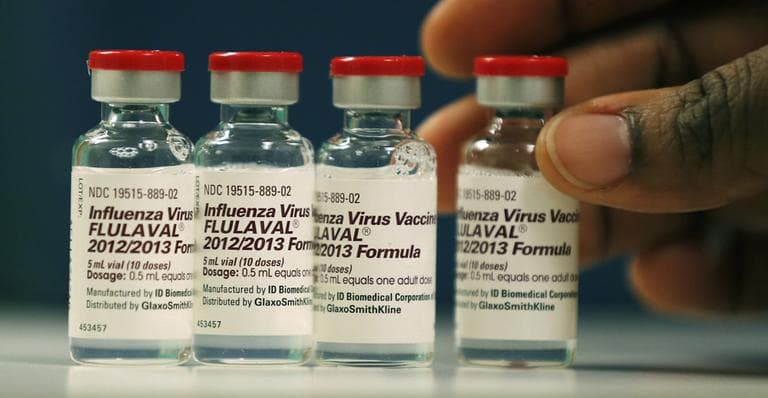Advertisement
Expert: Flu Vaccine Developers Must Start From Scratch
Resume
This year's flu season has been particularly nasty, reaching "epidemic" territory, according to the Centers for Disease Control and Prevention. Experts are predicting the flu could claim 36,000 lives this year.
The current shot is only about 62 percent effective, so pharmaceutical companies are working to improve the vaccine.
Some ideas include creating a vaccine that would cover more strains of the flu, developing a "universal" shot that would last five to ten years (instead of one) and using genetic sequencing to analyze strains so that researchers can better predict how the flu will evolve each year.
But Dr. Michael Osterholm, a University of Minnesota infectious disease expert, said none of those innovations will make much of a difference because the fundamental building block of the vaccine needs an update.
Old Antigens
Osterholm says the antigen used in vaccines, which causes the immune system to create antibodies to fight influenza, is the same one that's been used since the 1940s.
"The problem we're having today is that you can't really amp that up much without changing it completely," Osterholm said. "It would be like putting a 1940s transmission in a 2012 car."
Osterholm says there are two major barriers to getting new game-changing vaccines to market. First, he says the public believes the current vaccine is good enough, so there's no urgency to develop a brand new vaccine.
The second reason has to do with money.
Financial Concerns
"The vast majority of the modern technologies are in the hands of start-up companies that are literally hanging on by the skin of their teeth," Osterholm said.
He estimates it could cost up to $1 billion to develop a new vaccines, but the investment community isn't interested in a risky product that might never make it past the regulatory process.
"Remember, pharmaceutical companies are not philanthropic organizations," Osterholm said.
If new vaccines do come to market, consumers might have to pay more for their flu shot, but they'd be getting a better return on their investment, because the shot would actually work.
In the meantime, Americans will have to rely on a vaccine that is only 62 percent effective across the board, and much less effective for older people.
"My prediction is that by the end of the year, we are only going to see marginal, if any benefit for people over age 65, yet that's where the most severe disease and the deaths are occurring," Osterholm said.
Guest:
- Dr. Michael Osterholm, director of the Center for Infectious Disease Research and Policy at the University of Minnesota.
This segment aired on January 23, 2013.